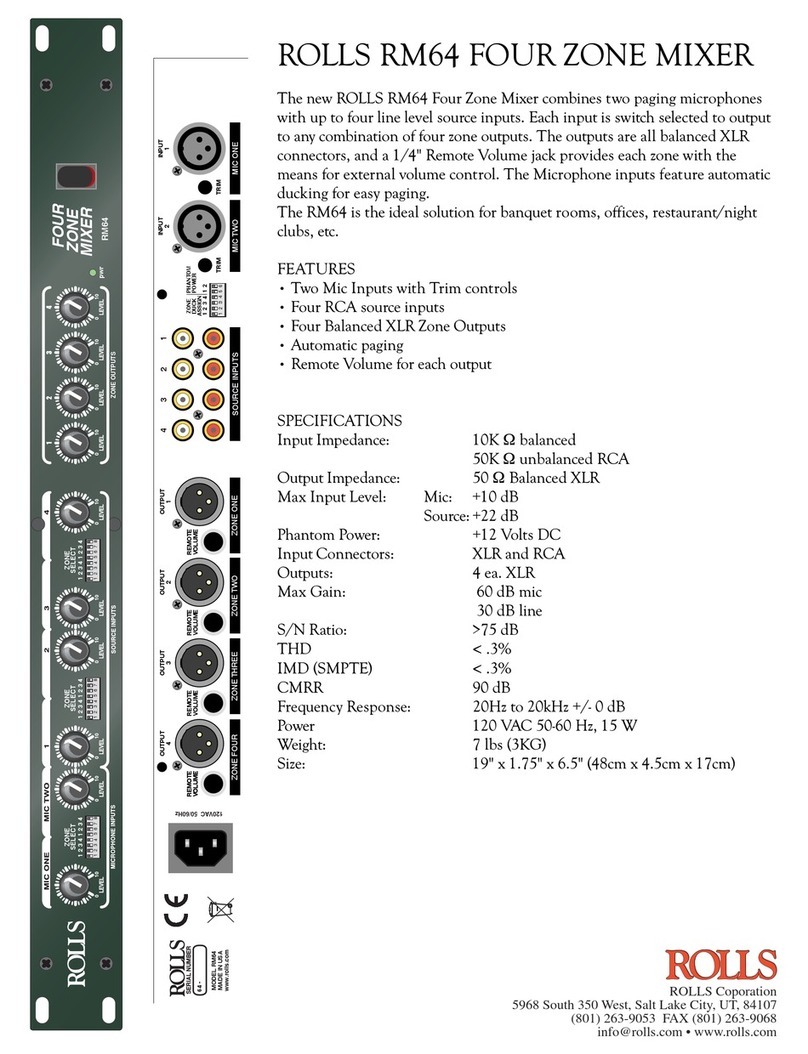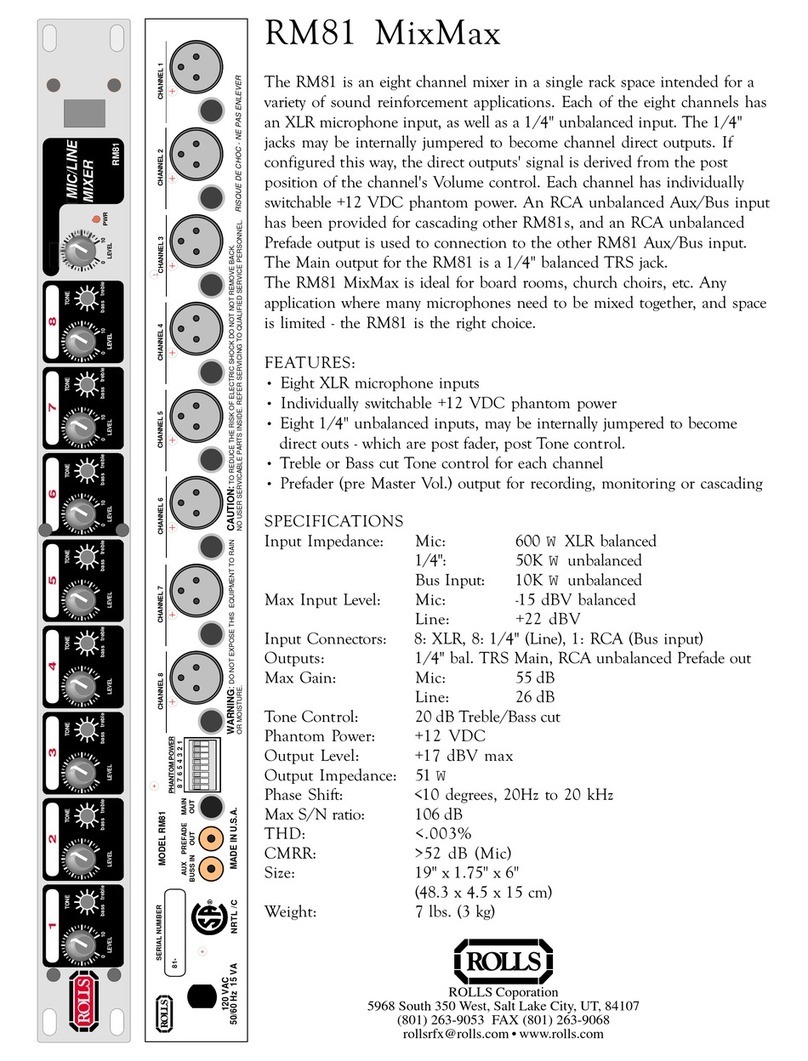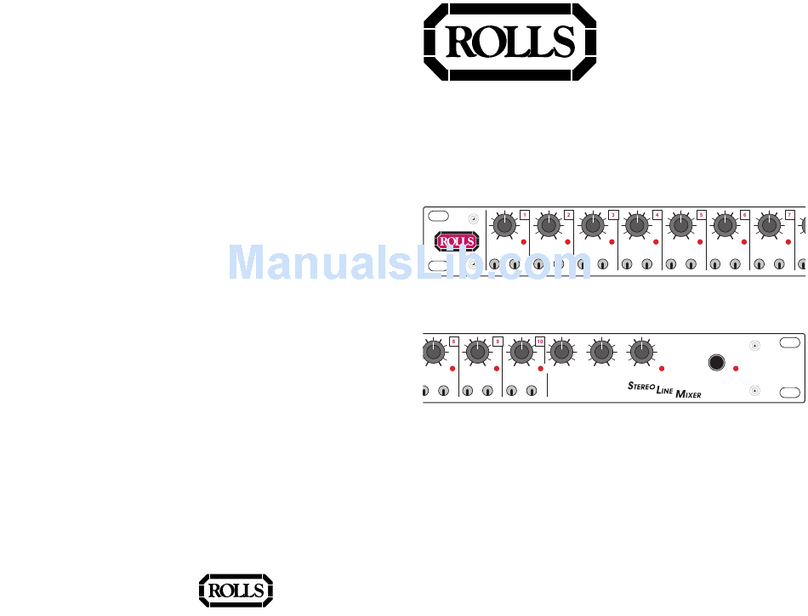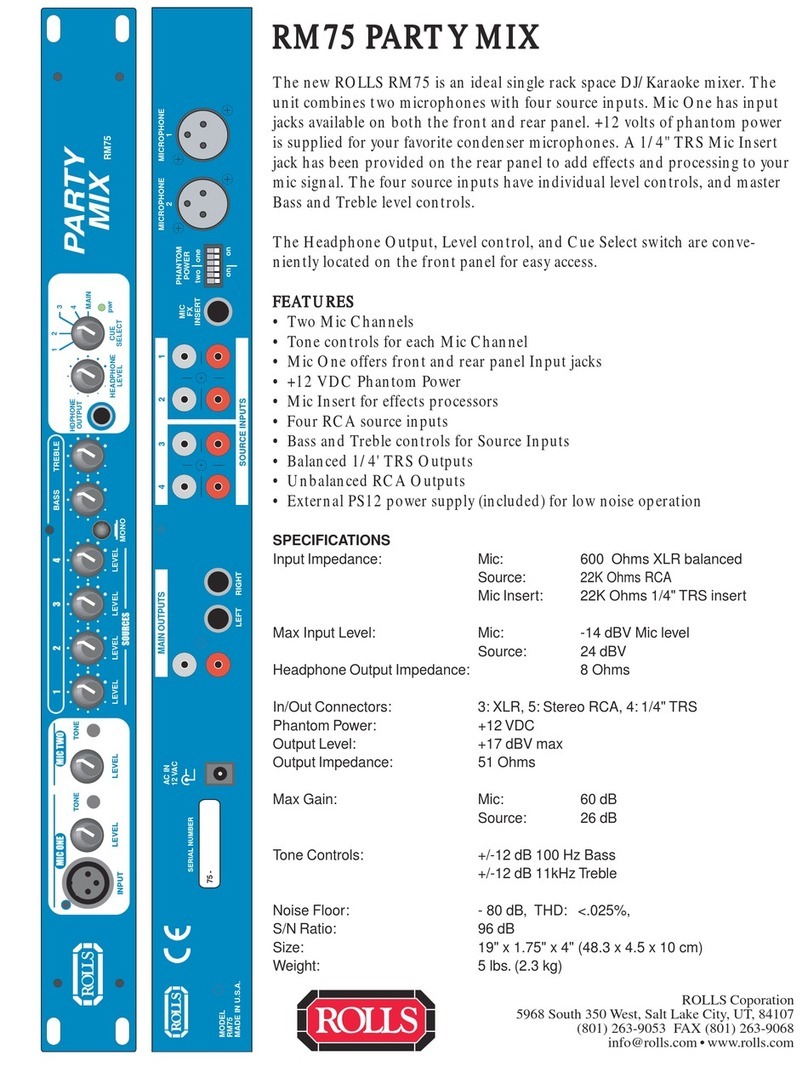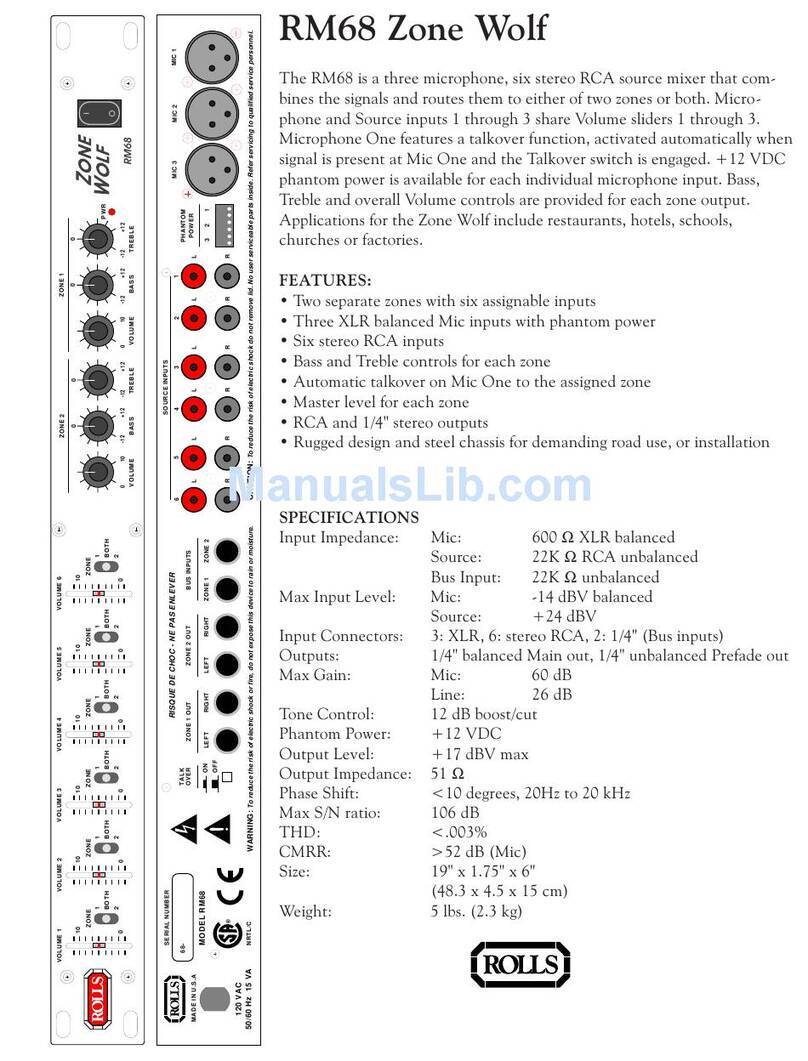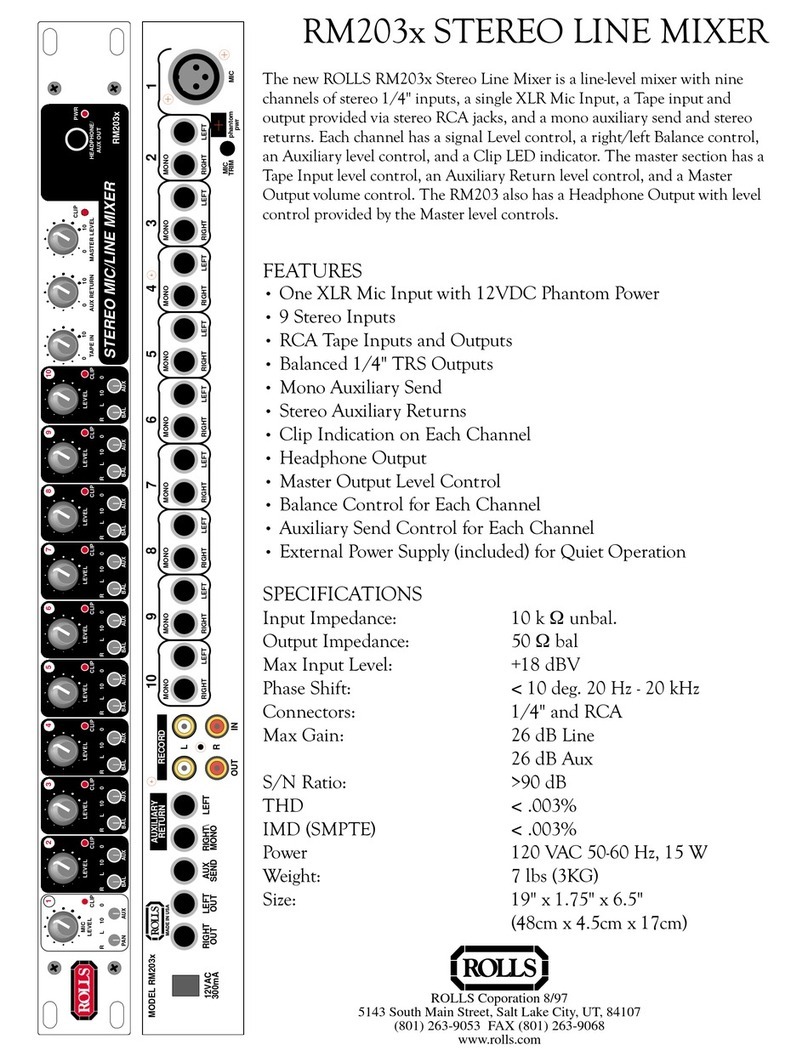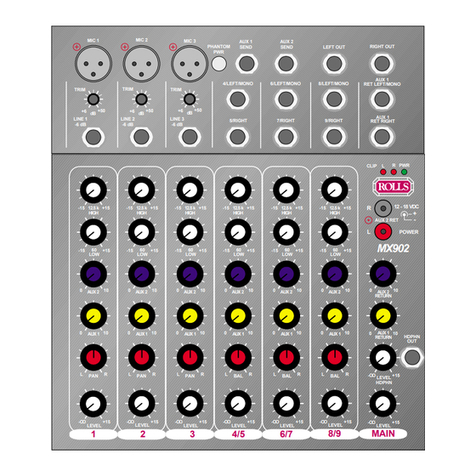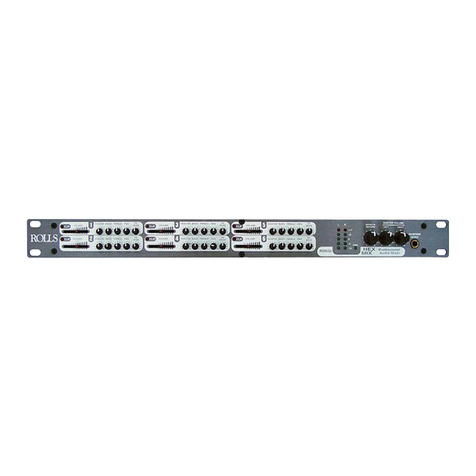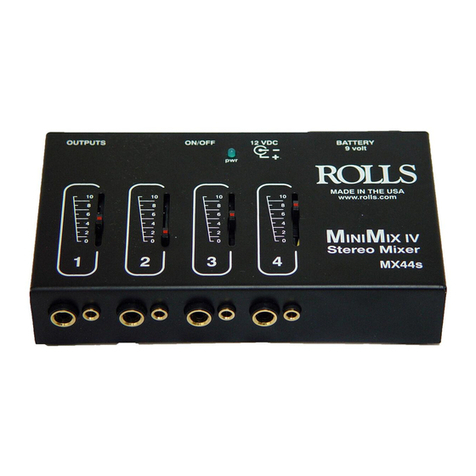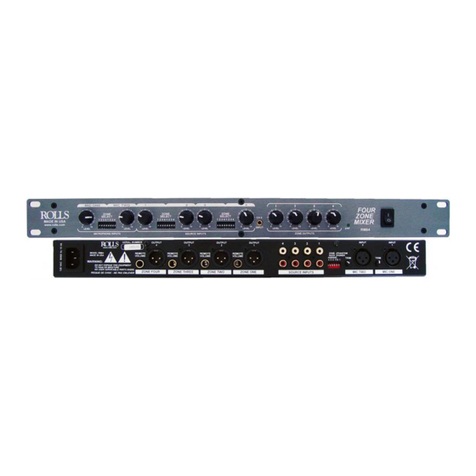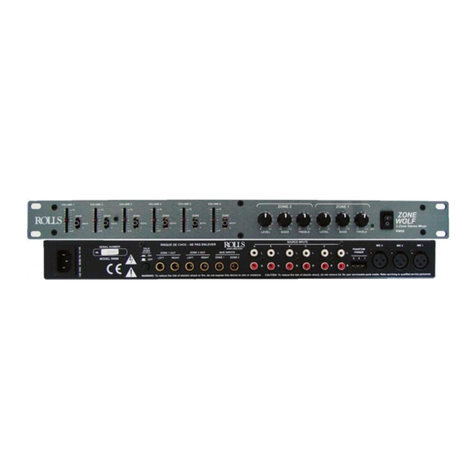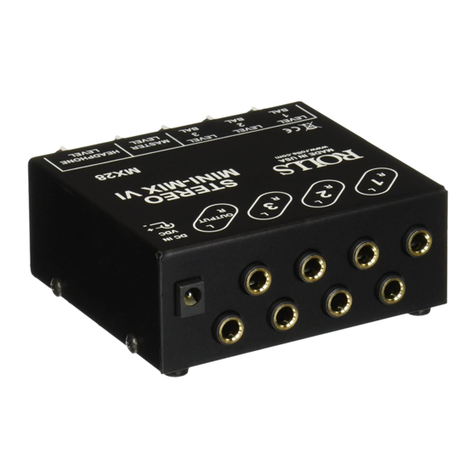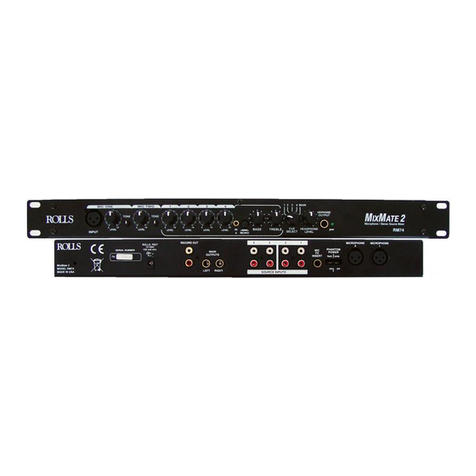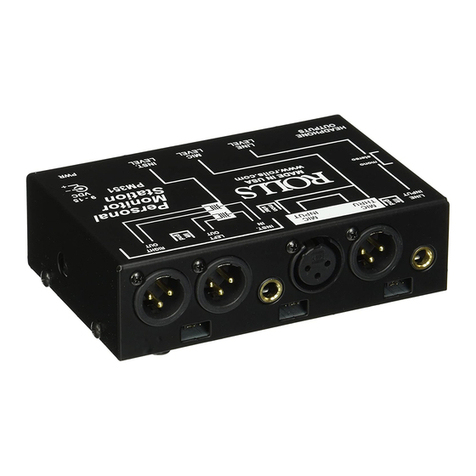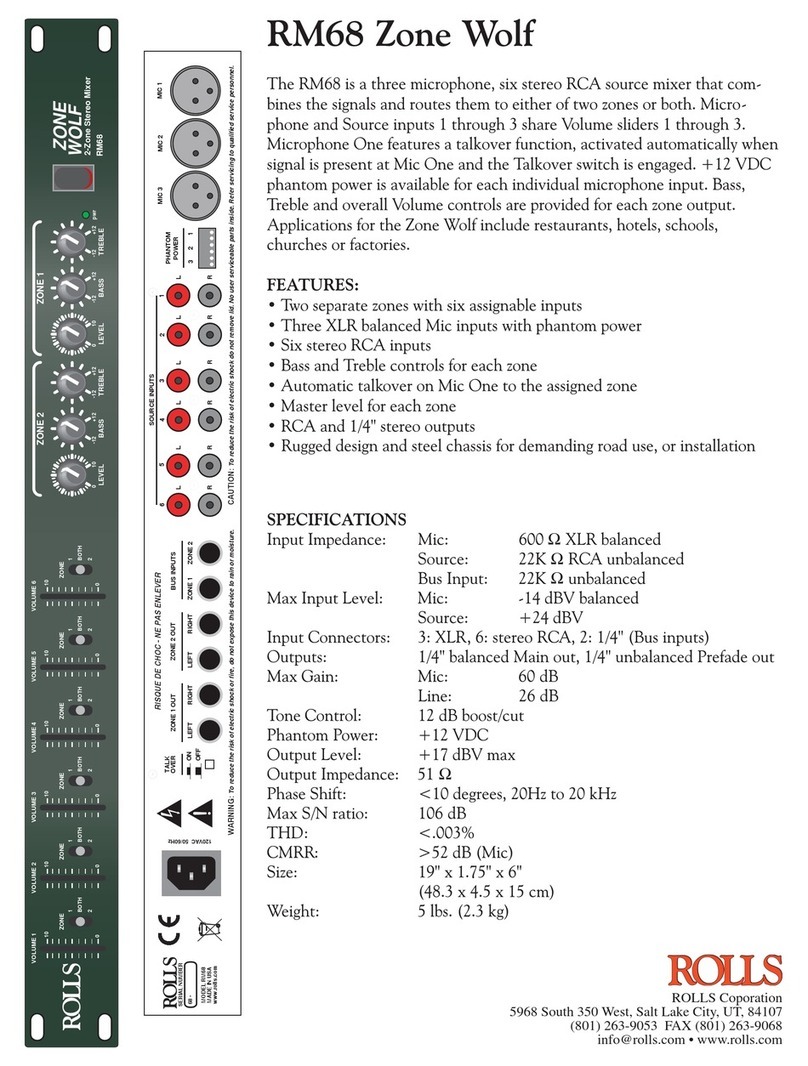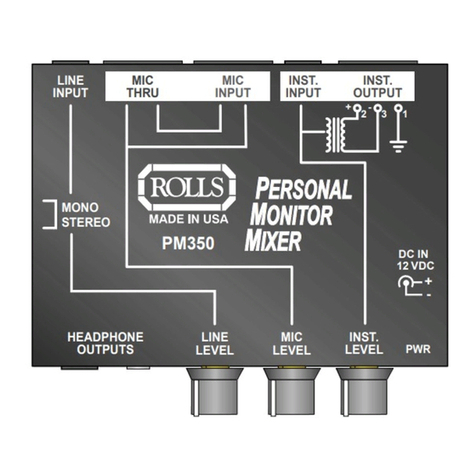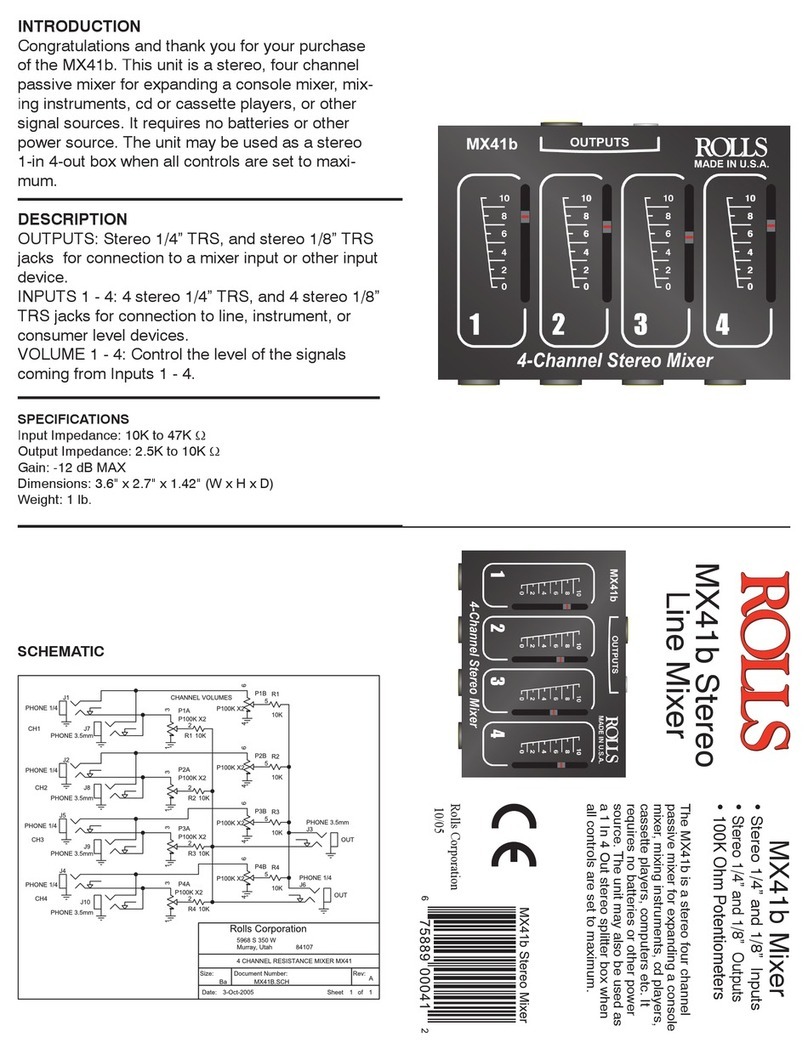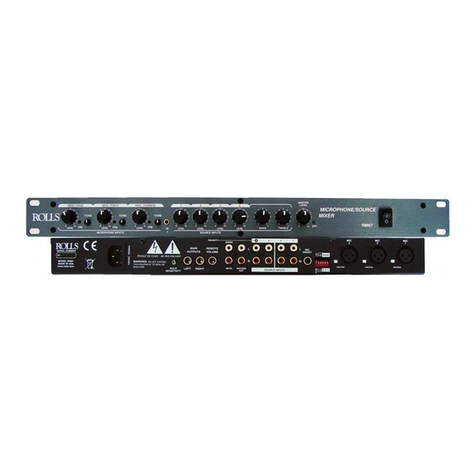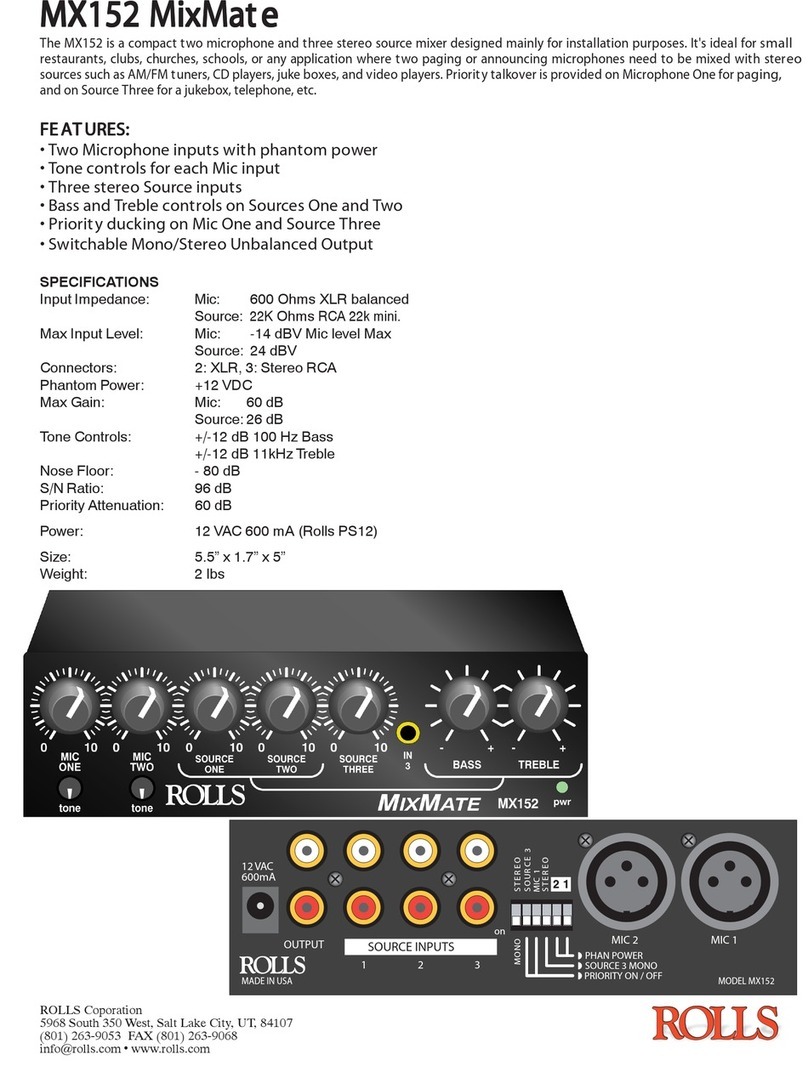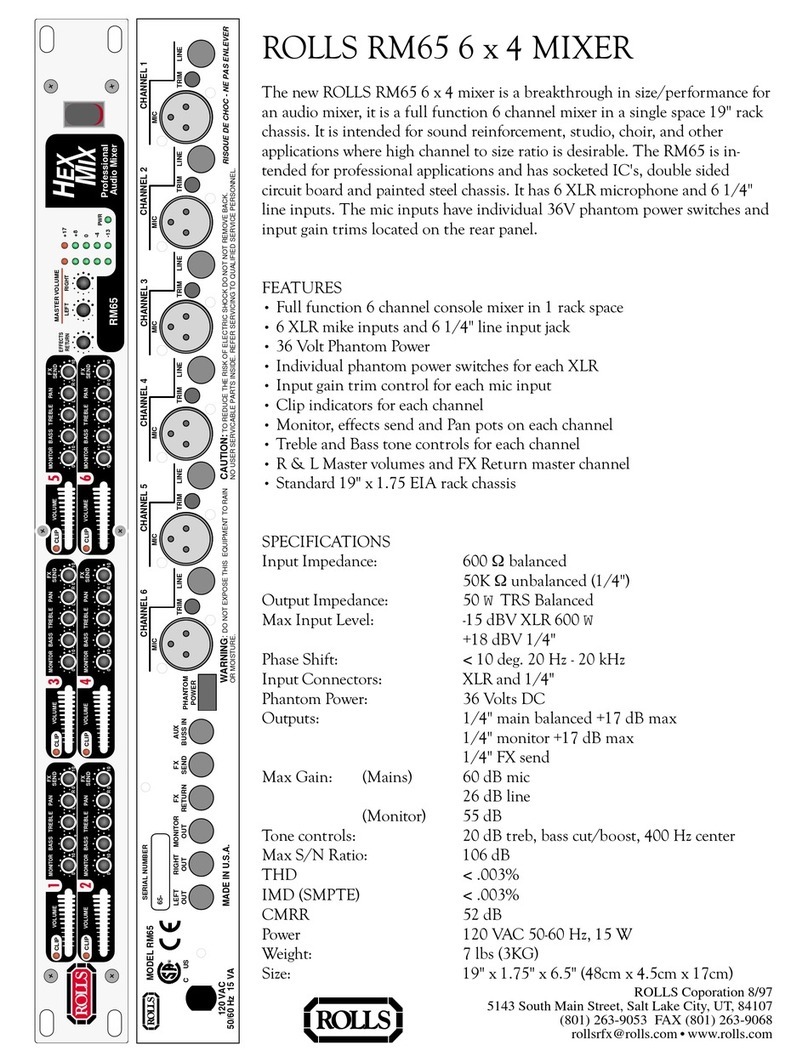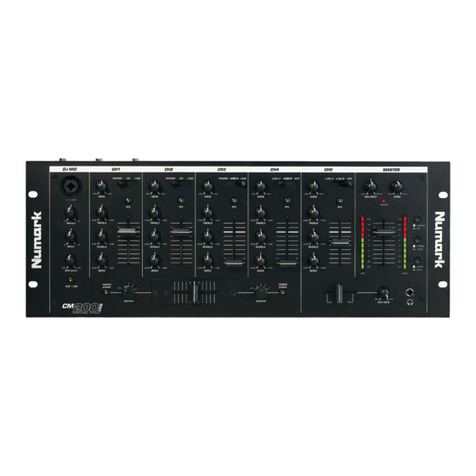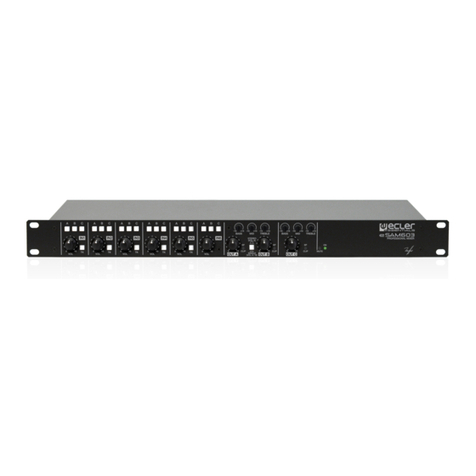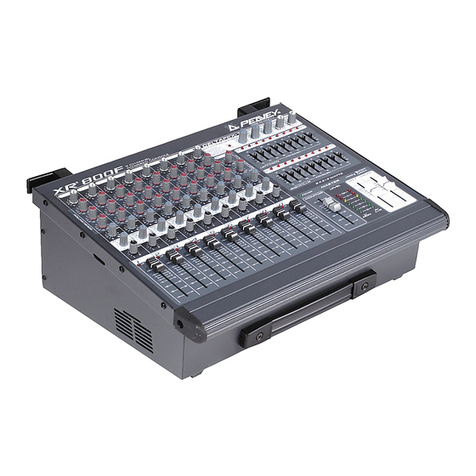INTRODUCTION
Thank you for your purchase of the MX310. This unit is designed and
manufactured to mix three microphones together and send their com-
bined signals out to a single transformer-balanced XLR output. The indi-
vidually switchable phantom power and low-cut switches provide the nal
touches which make the MX310 a valuable tool for any sound reinforce-
ment, musical, recording, or install application.
INSPECTION
1. Unpack and Inspect the MX310 package.
Your MX310 was carefully packed at the factory in a protective carton.
Nonetheless, be sure to examine the unit and the carton for any signs
of damage that may have occurred during shipping. If obvious physical
damage is noticed, contact the carrier immediately to make a damage
claim. We suggest saving the shipping carton and packing materials for
safely transporting the unit in the future.
2. For warranty registration go to our website: WWW.ROLLS.COM
DESCRIPTION
REAR PANEL
Mic Input: 1 - 3: XLR balanced inputs for connection to any standard
dynamic or condenser microphone.
Output: Transformer balanced XLR output jack for connection to the next
device in the signal chain such as a mixer, signal processor or amplier.
MIC/LINE Switch: This switch adjusts the output XLR level from Mic or
Line level. This switch does not eect the Aux/Headphone Output.
FRONT PANEL
Mic Level 1 - 3: These controls adjust the level of the corresponding Mic
channel. The level varies from -innity (o) to +60 dB of gain (typical).
Phone/Aux: 1/8" TS (tip,sleve AKA mono) jack which may be connected to a
pair of mono headphones (if you use stereo headphones you will only hear
the left side) for personal monitoring, or to an unbalanced input of a signal
processor or amplier.
Power LED: Indicates the MX310 is on.
Clip LED: Indicates that clipping is about to occur or occurring in the
MX310 circuitry. This LED begins to light 3dB below actual circuit clip-
ping.
Located on the right side of the unit is the +12 VDC power jack for connec-
tion to the Rolls PS27 +12 VDC (outside of the ring is positive) external power
supply.
On the left side are the Phantom Power and Low-Cut
switches.
As shown here, under each number is a P indicating
Phantom Power, and an L which indicates Low-Cut.
When the P switch is DOWN, the phantom power is ON, when it is UP,
the phantom power is OFF.When the L switch is UP, the low-cut is ON,
when it is DOWN, the low-cut is OFF.
SCHEMATIC

